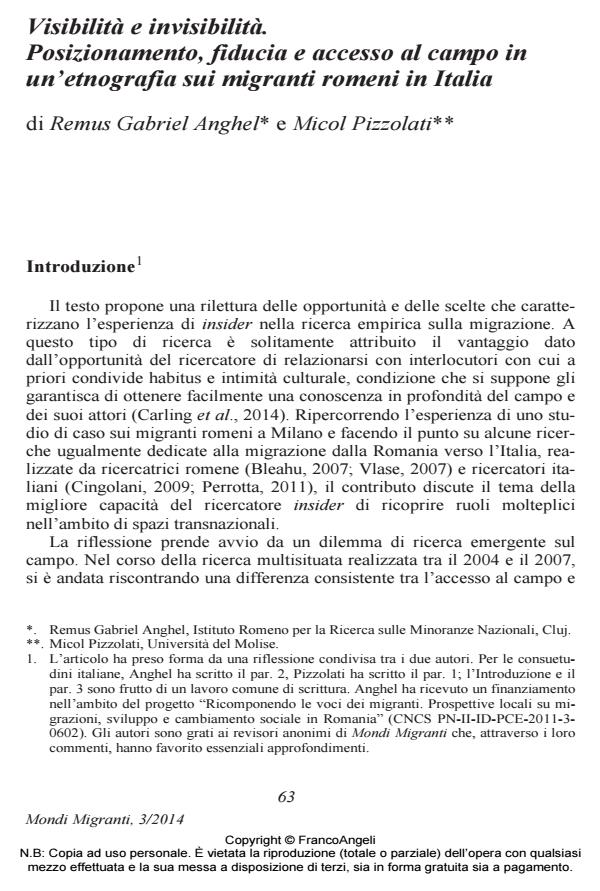Visibility and Invisibility. Positionality, Trust and Access to the field in an Ethnography with Romanian migrants in Italy
Journal title MONDI MIGRANTI
Author/s Remus Anghel, Micol Pizzolati
Publishing Year 2015 Issue 2014/3
Language Italian Pages 15 P. 63-77 File size 75 KB
DOI 10.3280/MM2014-003004
DOI is like a bar code for intellectual property: to have more infomation
click here
Below, you can see the article first page
If you want to buy this article in PDF format, you can do it, following the instructions to buy download credits

FrancoAngeli is member of Publishers International Linking Association, Inc (PILA), a not-for-profit association which run the CrossRef service enabling links to and from online scholarly content.
His paper discusses researchers’ positionality in multi-sided ethnography of migration. It argues that insider researchers may use multiple strategies to access the field: they may also have different visible and invisible positions. Access to the field may greatly vary in respect to these positions, time available, and the research location - at home or abroad. The research was conducted with a group of Romanian irregular migrants in Milan, by a Romanian researcher. The researcher had multiple roles: invisible migrant, migrant sociologist, friend of a friend and friend of a relative. While visible strategies in Milan posed serious limitations to accessing the field, invisible ones were more successful. Besides, the use of trust relations through gatekeepers, here friends and relatives, were the most successful strategies. Time and space played also an important role during the fieldwork. Abroad migrants had not had enough time at disposal in contrast to the situation at home during their summer vacations. Location was even more important. Abroad irregular migrants tended to be untrustworthy. In contrast to the situation at home, where they were open to research inquiries.
Keywords: Insider research, migration, multi-sited ethnography, positionality, Romania, Italy.
Remus Anghel, Micol Pizzolati, Visibilità e invisibilità. Posizionamento, fiducia e accesso al campo in un’etnografia sui migranti romeni in Italia in "MONDI MIGRANTI" 3/2014, pp 63-77, DOI: 10.3280/MM2014-003004